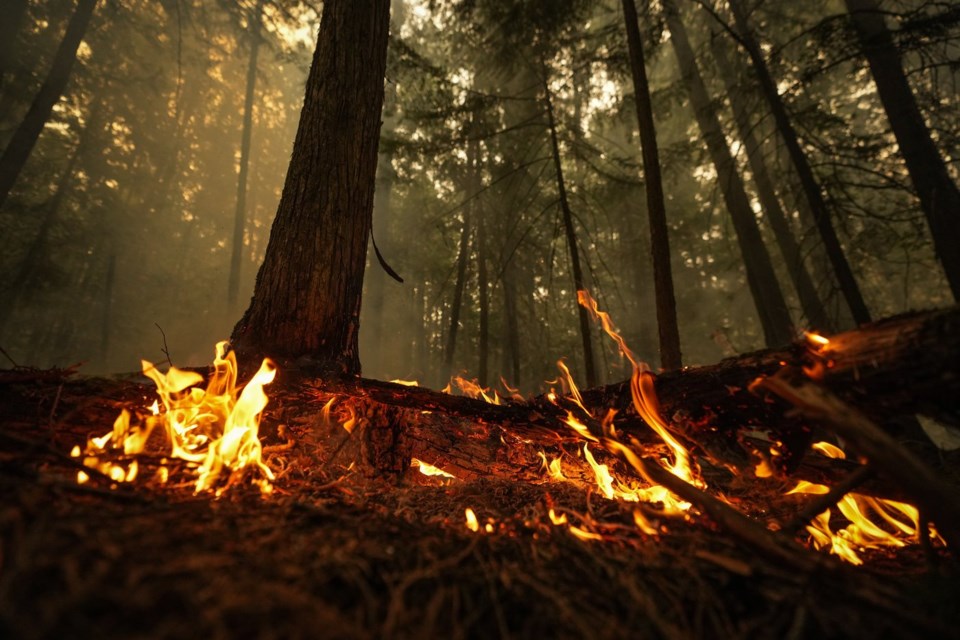Here is a roundup of stories from The Canadian Press designed to bring you up to speed...
Evacuation order issued in Kelowna due to wildfire
An evacuation order has been issued for several homes at risk from the Whelan Creek wildfire in the Ellison area of Kelowna.
The Regional District of Central Okanagan says residents at seven addresses on Rockface Road and Dead Pine Drive should expect to be away from their homes overnight.
The district has also issued an evacuation alert for 106 other addresses. Residents must be prepared to leave at a moment's notice as the fire burns east of Kelowna International Airport.
RCMP warned of the wildfire on Sunday afternoon, saying the blaze was affecting the area and officers were conducting "tactical evacuations" of homes.
The BC Wildfire Service says the Whelan Creek wildfire has grown to 4.31 hectares in size and is currently С����Ƶ held.
Here's what else we're watching...
Smith and Ford to sign MOU in Calgary today
The premiers of Alberta and Ontario will meet in Calgary today to sign two new memorandums of understanding.
Danielle Smith's office says she and Doug Ford will sign agreements on energy priorities, trade and interprovincial co-operation.
The pair were together at a roundtable in Calgary on Sunday, with Ford tweeting that they discussed how to build new pipelines, as well as rail lines to export Canadian critical minerals and energy.
Ford signed a memorandum in May with Manitoba Premier Wab Kinew to boost the movement of goods and labour between the two provinces.
The rush to break down internal barriers to trade comes in response to U.S. President Donald Trump's tariff war with Canada. One study estimates existing internal trade hurdles cost the economy some $200 billion a year.
Report casts doubt over internal trade moves
A new report by the Canadian Centre for Policy Alternatives is dismissing moves by the federal government and Canada's premiers to break down internal trade barriers as little more than "political theatre."
It lands just ahead of the country’s internal trade ministers meeting in Quebec City this week, where they are expected to talk about their next steps as they rush to remove rules hampering cross-provincial trade.
Prime Minister Mark Carney vowed throughout the spring election to forge "one Canadian economy" with the premiers by eliminating internal barriers to trade and labour mobility in response to U.S. President Donald Trump’s tariffs.
Internal Trade Minister Chrystia Freeland has pointed to studies that say internal trade barriers amount to a seven per cent tariff that Canada imposes on itself, and that removing them could boost the economy by up to $200 billion.
But the left-leaning think tank's report released this morning reviews the steps taken by Ottawa and the provinces to remove red tape and argues they will do little to mitigate the tariff threat or significantly boost the economy.
Labour groups hope Bay's fall will spur change
When Hudson’s Bay employees rallied in front of two of the iconic retailer’s properties in late May, days before the retailer closed its doors for good, they knew there was no hope of saving their jobs.
Their goal instead was to encourage lawmakers to make the fall of the 355-year-old retailer — and all the failed companies that follow it — a little less painful for employees.
They argued that could be done if the government adopted their wish list of ideas ranging from boosting federal support programs to prioritizing workers rather than lenders when companies in creditor protection are repaying what they owe.
Such ideas were previously bandied around in labour circles when the Canadian divisions of Sears, Target and Nordstrom collapsed. This time, they're hoping the momentum lasts.
"When you're looking for these kinds of improvements, you will have ebbs and flows, but right now, we have an opportunity because the Bay situation is fresh in people's minds" said Lana Payne, president of Unifor.
Toronto's Rogers Stadium gears up to host Coldplay
Rogers Stadium is set to welcome tens of thousands of Coldplay fans tonight for the first of four shows by the British rock band, as organizers say they are "making adjustments" to improve crowd control at Toronto's newest outdoor music venue.
After the venue's inaugural concert last Sunday, some attendees said it took up to two hours to exit the stadium as the site and transit services seemed ill-equipped to handle the large crowds.
Concertgoers also complained about limited access to water at the stadium, with some describing hour-long lineups at bottle filling stations that dispensed warm water in some cases.
Live Nation Canada, which operates the stadium near Downsview Park, says it will be adding more signage, lighting, staff and water stations to improve the fan experience.
It also says the stadium's exit routes will be reconfigured to disperse crowds to all three nearby subway stations in order to mitigate crowding at the Downsview Park station, which also serves GO train passengers.
The Toronto Transit Commission has said it will be adding more staff to its Downsview Park and Wilson stations on concert nights, while Metrolinx only said it would "closely monitor" GO train ridership levels for events at the stadium.
This report by The Canadian Press was first published July 7, 2025.
The Canadian Press




